in a table, what should you press to move back one cell in the current row?
Lesson 6: Modifying Columns, Rows, and Cells
/en/excel/cell-nuts/content/
Introduction
By default, every row and cavalcade of a new workbook is gear up to the aforementioned tiptop and width. Excel allows you to alter cavalcade width and row height in different ways, including wrapping text and merging cells.
Optional: Download our practice workbook.
Picket the video beneath to learn more than near modifying columns, rows, and cells.
To change column width:
In our instance below, column C is too narrow to brandish all of the content in these cells. Nosotros can brand all of this content visible by changing the width of cavalcade C.
- Position the mouse over the cavalcade line in the column heading so the cursor becomes a double pointer.
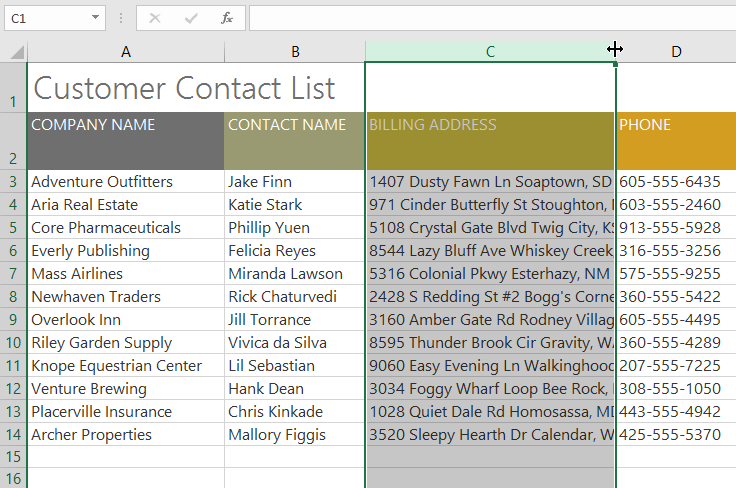
- Click and drag the mouse to increase or decrease the column width.
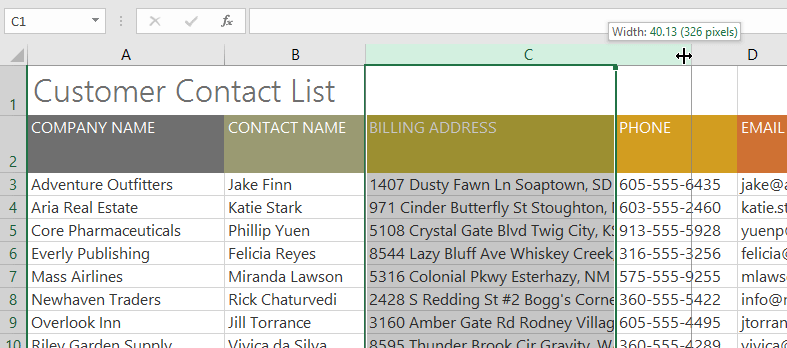
- Release the mouse. The column width will be changed.
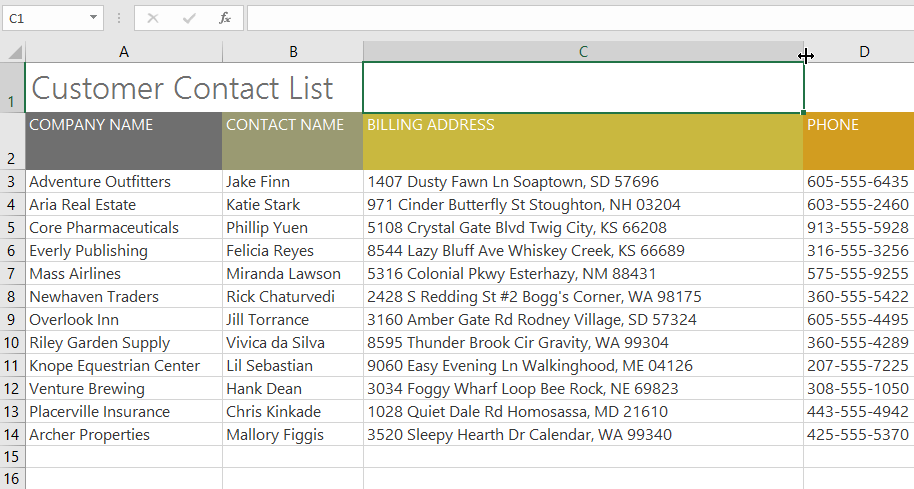
With numerical data, the cell will display pound signs (#######) if the column is too narrow. Simply increase the cavalcade width to make the data visible.
To AutoFit column width:
The AutoFit feature will allow yous to set a column'south width to fit its content automatically.
- Position the mouse over the cavalcade line in the cavalcade heading so the cursor becomes a double arrow.
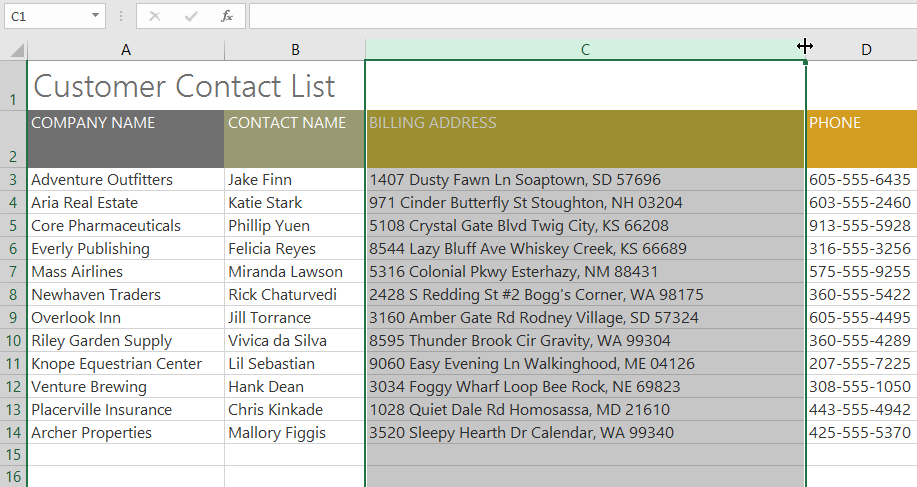
- Double-click the mouse. The cavalcade width will be changed automatically to fit the content.
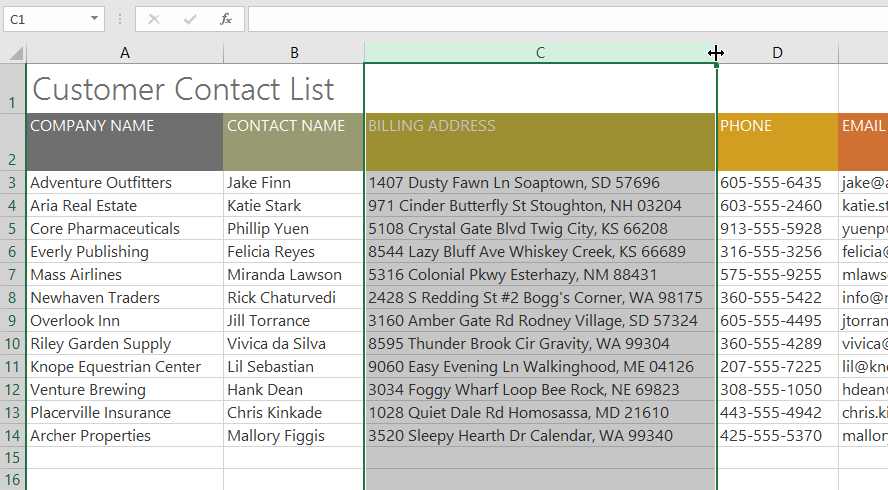
Yous can too AutoFit the width for several columns at the same time. Simply select the columns y'all want to AutoFit, then select the AutoFit Column Width command from the Format drib-downwards card on the Home tab. This method tin can besides be used for row elevation.
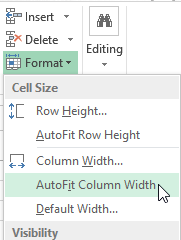
To modify row height:
- Position the cursor over the row line so the cursor becomes a double pointer.
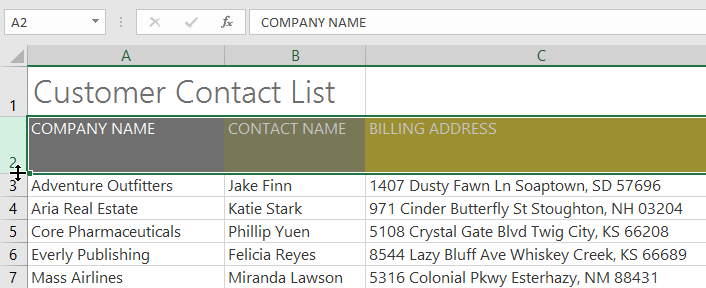
- Click and drag the mouse to increment or decrease the row height.
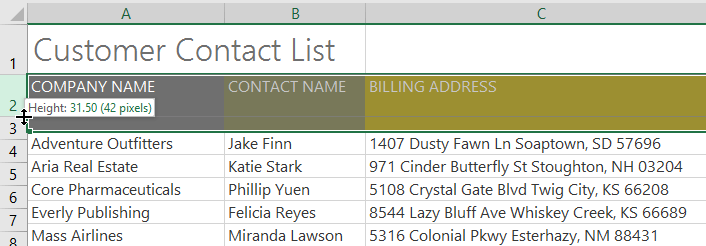
- Release the mouse. The height of the selected row volition exist changed.
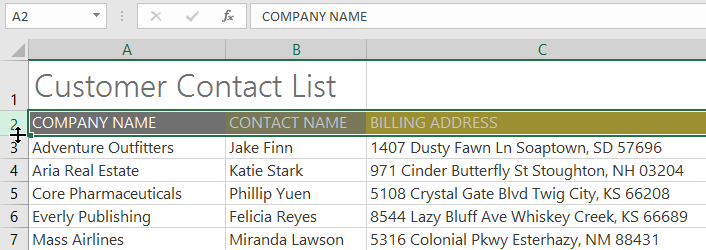
To modify all rows or columns:
Instead of resizing rows and columns individually, you can modify the height and width of every row and column at the same time. This method allows you to set a uniform size for every row and column in your worksheet. In our example, nosotros will prepare a uniform row pinnacle.
- Locate and click the Select All button but below the proper name box to select every cell in the worksheet.
- Position the mouse over a row line then the cursor becomes a double arrow.
- Click and elevate the mouse to increase or decrease the row height, then release the mouse when you are satisfied. The row height will be inverse for the entire worksheet.
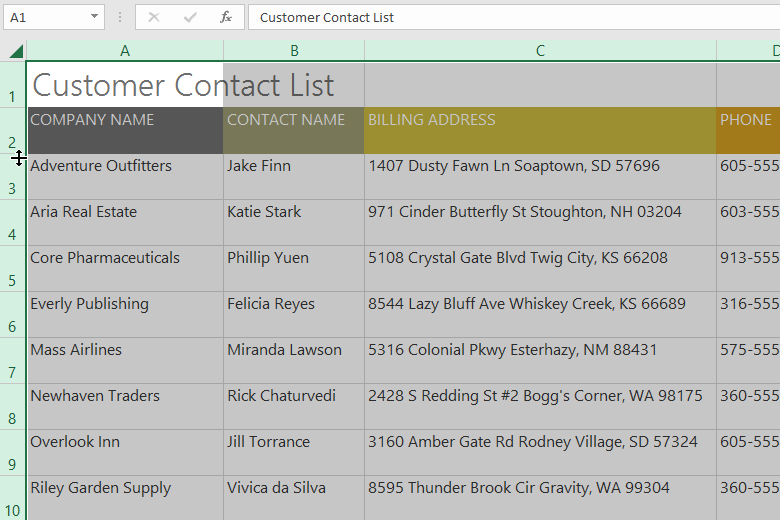
Inserting, deleting, moving, and hiding
Afterwards yous've been working with a workbook for a while, you may find that you want to insert new columns or rows, delete certain rows or columns, motility them to a different location in the worksheet, or even hibernate them.
To insert rows:
- Select the row heading below where you want the new row to appear. In this instance, we want to insert a row between rows iv and 5, so we'll select row five.
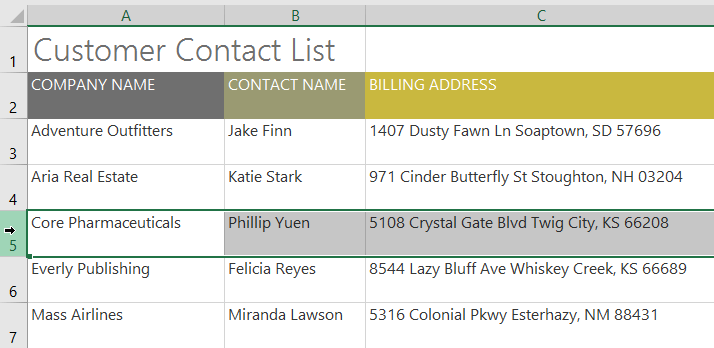
- Click the Insert command on the Home tab.

- The new row will appear to a higher place the selected row.
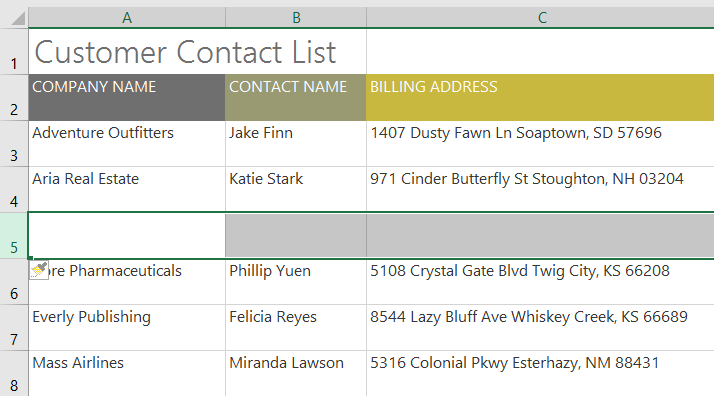
When inserting new rows, columns, or cells, you will see a paintbrush icon next to the inserted cells. This button allows you to choose how Excel formats these cells. By default, Excel formats inserted rows with the aforementioned formatting as the cells in the row in a higher place. To access additional options, hover your mouse over the icon, then click the drop-down arrow.
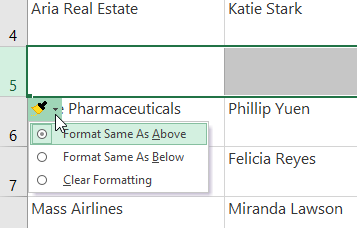
To insert columns:
- Select the column heading to the right of where you want the new column to announced. For example, if you want to insert a column between columns D and Due east, select column E.
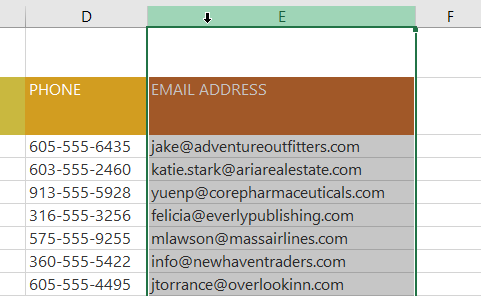
- Click the Insert command on the Home tab.
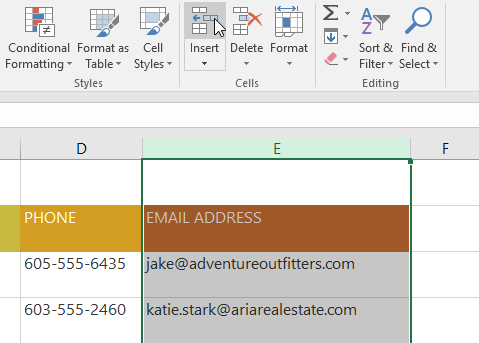
- The new column will appear to the left of the selected cavalcade.
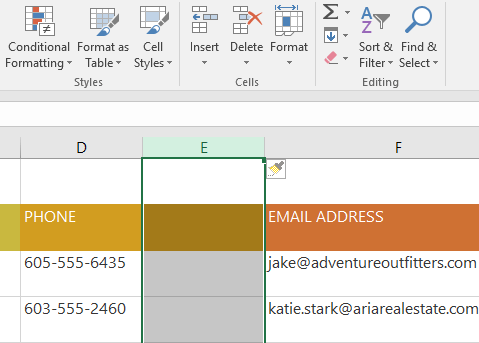
When inserting rows and columns, make sure to select the unabridged row or column by clicking the heading. If you lot select merely a jail cell in the row or column, the Insert control will only insert a new cell.
To delete a row or column:
It's easy to delete a row or column that you no longer need. In our example we'll delete a row, but you tin delete a column the same style.
- Select the row you want to delete. In our example, nosotros'll select row 9.
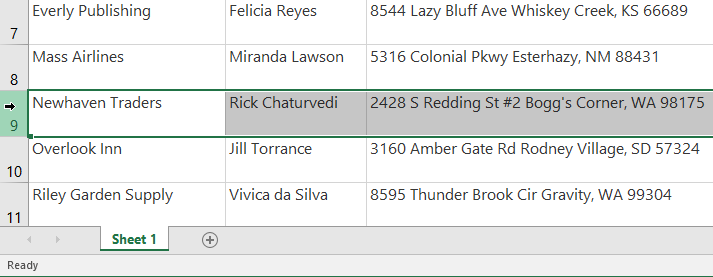
- Click the Delete command on the Home tab.

- The selected row will be deleted, and those around it will shift. In our example, row ten has moved upwardly, so it's at present row ix.
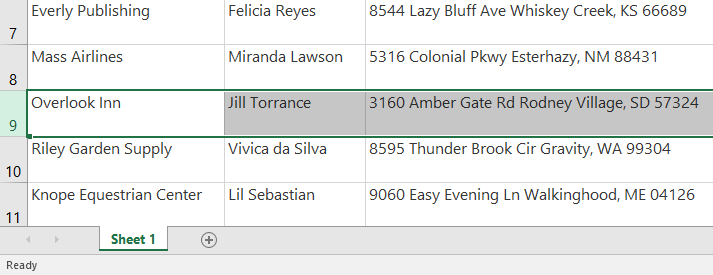
Information technology'south important to understand the difference between deleting a row or cavalcade and simply clearing its contents. If yous want to remove the content from a row or cavalcade without causing others to shift, right-click a heading, and then select Articulate Contents from the drib-down card.
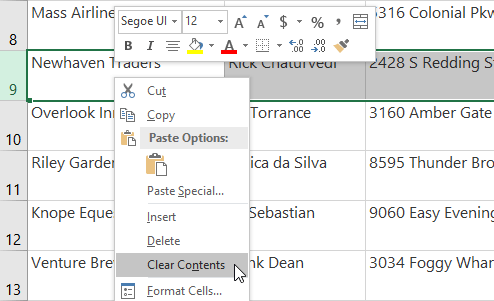
To move a row or cavalcade:
Sometimes you may want to movement a column or row to rearrange the content of your worksheet. In our example we'll motion a column, only you can move a row in the aforementioned fashion.
- Select the desired column heading for the column you want to move.
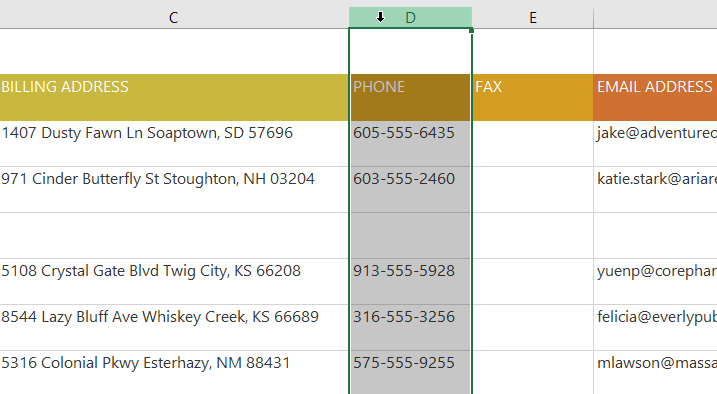
- Click the Cutting command on the Domicile tab, or press Ctrl+10 on your keyboard.
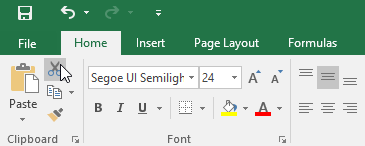
- Select the cavalcade heading to the right of where you want to move the column. For example, if you want to movement a cavalcade between columns Due east and F, select column F.
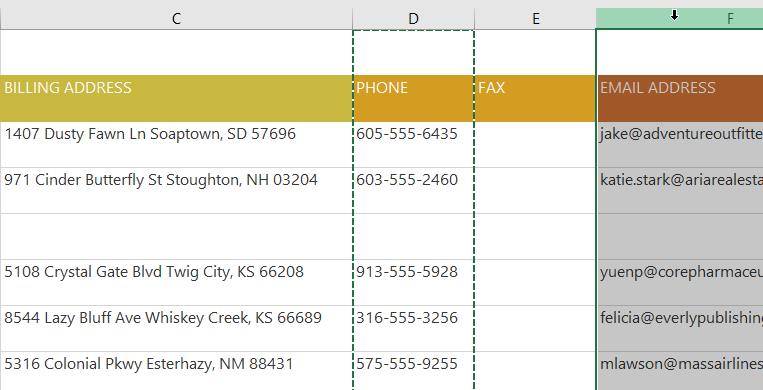
- Click the Insert command on the Dwelling tab, then select Insert Cut Cells from the drop-down bill of fare.
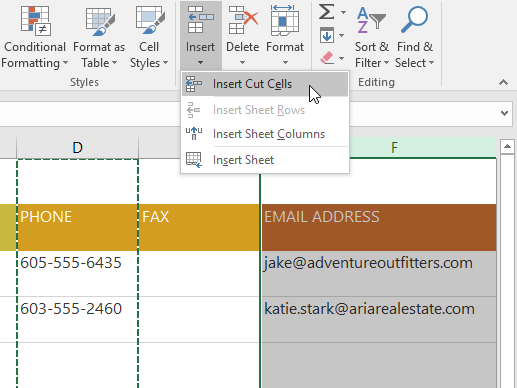
- The cavalcade will exist moved to the selected location, and the columns around information technology will shift.
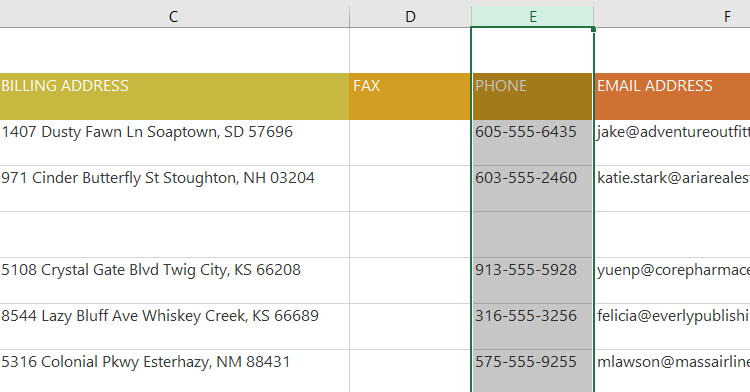
You tin besides access the Cut and Insert commands by right-clicking the mouse and selecting the desired commands from the drib-down menu.
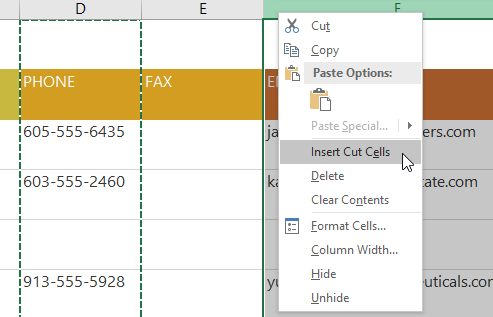
To hide and unhide a row or column:
At times, you may want to compare certain rows or columns without changing the organization of your worksheet. To do this, Excel allows yous to hide rows and columns as needed. In our example we'll hide a few columns, but y'all tin can hide rows in the same manner.
- Select the columns you want to hibernate, right-click the mouse, then select Hide from the formatting menu. In our case, nosotros'll hide columns C, D, and E.
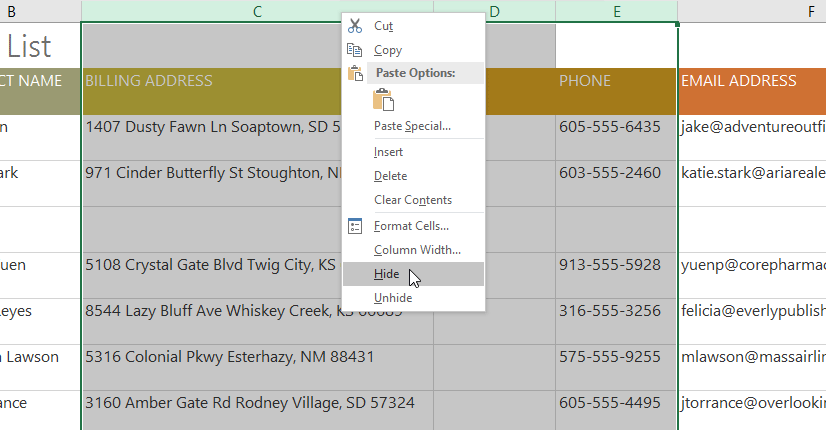
- The columns volition be subconscious. The greenish column line indicates the location of the hidden columns.
- To unhide the columns, select the columns on both sides of the hidden columns. In our instance, we'll select columns B and F. Then right-click the mouse and select Unhide from the formatting bill of fare.
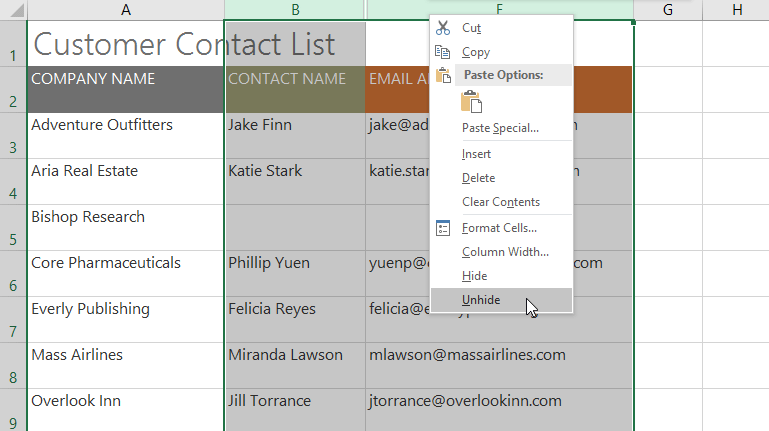
- The hidden columns will reappear.
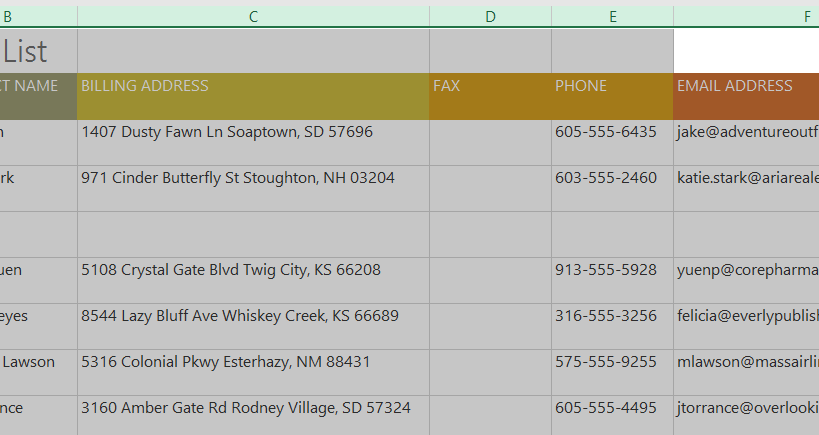
Wrapping text and merging cells
Whenever y'all have too much cell content to exist displayed in a unmarried cell, you may decide to wrap the text or merge the cell rather than resize a column. Wrapping the text volition automatically modify a cell's row height, assuasive jail cell contents to exist displayed on multiple lines. Merging allows you to combine a prison cell with side by side empty cells to create one large cell.
To wrap text in cells:
- Select the cells you want to wrap. In this case, nosotros'll select the cells in column C.
- Click the Wrap Text command on the Home tab.
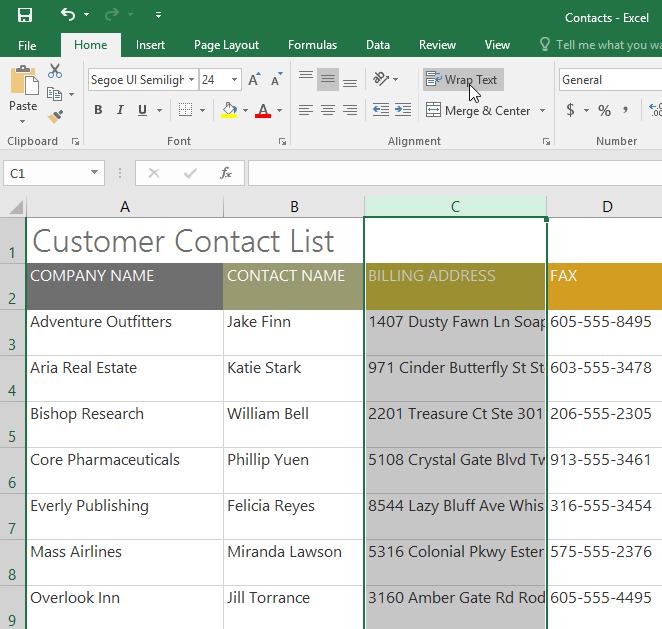
- The text in the selected cells volition be wrapped.
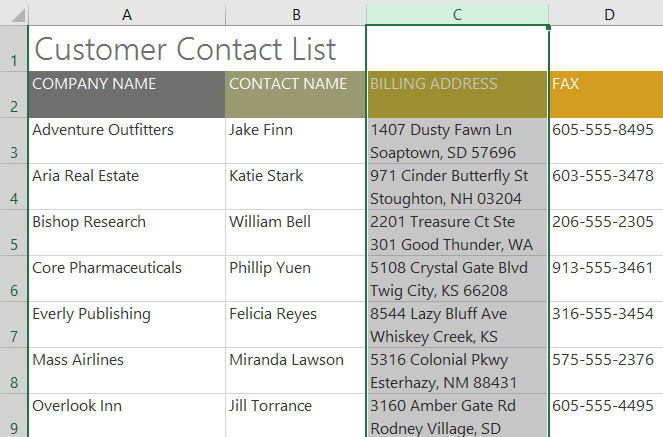
Click the Wrap Text command again to unwrap the text.
To merge cells using the Merge & Center command:
- Select the cell range you lot want to merge. In our example, we'll select A1:F1.
- Click the Merge & Center control on the Habitation tab. In our example, we'll select the cell range A1:F1.
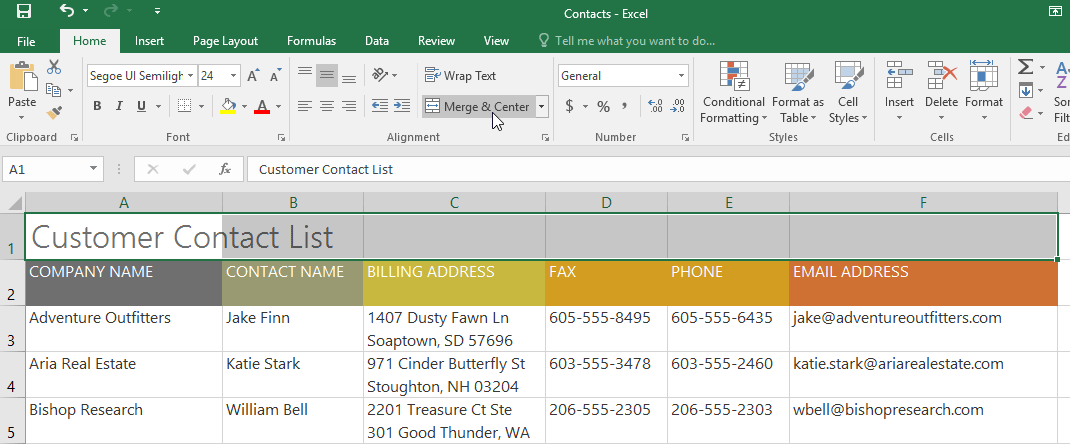
- The selected cells will be merged, and the text volition be centered.

To admission additional merge options:
If you click the drop-down arrow side by side to the Merge & Center command on the Abode tab, the Merge drop-downwards menu will appear.
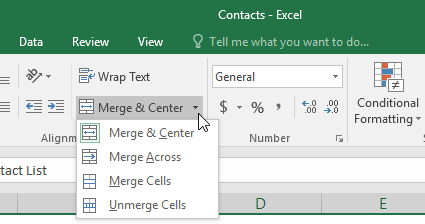
From hither, yous can choose to:
- Merge & Eye: This merges the selected cells into 1 prison cell and centers the text.
- Merge Across: This merges the selected cells into larger cells while keeping each row separate.
- Merge Cells: This merges the selected cells into one jail cell but does not center the text.
- Unmerge Cells: This unmerges selected cells.
Be careful when using this feature. If you lot merge multiple cells that all contain data, Excel will keep merely the contents of the upper-left prison cell and discard everything else.
Centering across selection
Merging tin can be useful for organizing your data, only it tin also create problems later on. For example, information technology can be difficult to move, re-create, and paste content from merged cells. A good culling to merging is to Centre Across Selection , which creates a similar event without really combining cells.
Watch the video below to learn why you should use Centre Across Selection instead of merging cells.
To use Center Across Selection:
- Select the desired cell range. In our example, nosotros'll select A1:F1. Note: If y'all already merged these cells, y'all should unmerge them earlier continuing to stride 2.
- Click the pocket-size arrow in the lower-correct corner of the Alignment group on the Domicile tab.
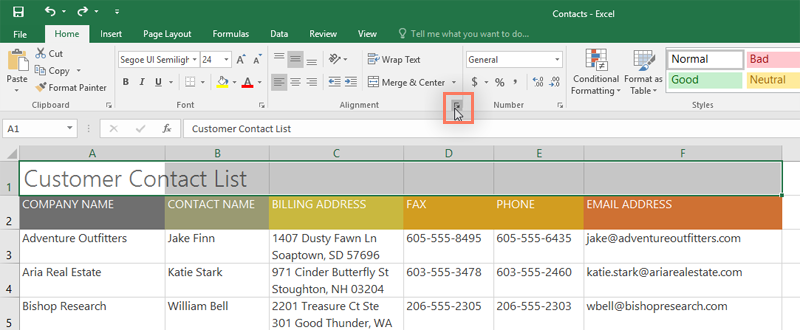
- A dialog box will appear. Locate and select the Horizontal drib-downwardly card, select Center Beyond Selection, then click OK.
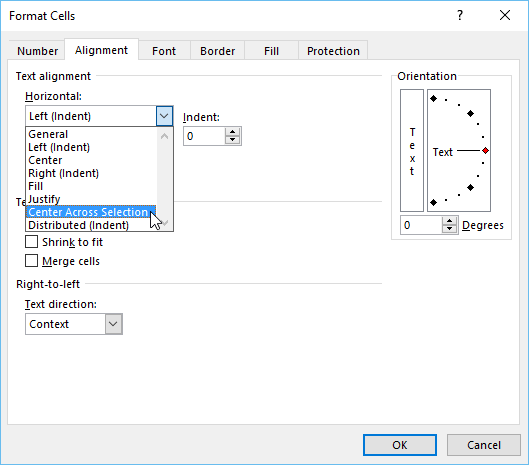
- The content will exist centered beyond the selected cell range. As you can run into, this creates the same visual consequence as merging and centering, simply information technology preserves each cell inside A1:F1.

Claiming!
- Open our do workbook.
- Autofit Column Width for the entire workbook.
- Modify the row height for rows iii to 14 to 22.5 (xxx pixels).
- Delete row x.
- Insert a column to the left of column C. Type SECONDARY CONTACT in cell C2.
- Make sure prison cell C2 is withal selected and choose Wrap Text.
- Merge and Middle cells A1:F1.
- Hide the Billing Accost and Phone columns.
- When you're finished, your workbook should look something similar this:

/en/excel/formatting-cells/content/
Source: https://edu.gcfglobal.org/en/excel/modifying-columns-rows-and-cells/1/
0 Response to "in a table, what should you press to move back one cell in the current row?"
Post a Comment